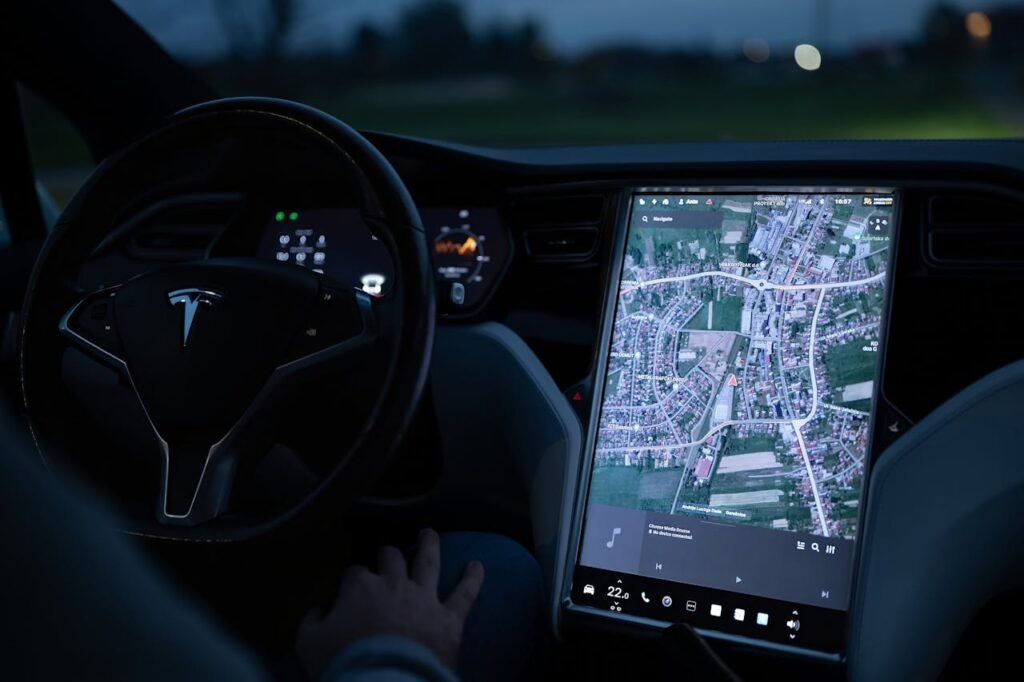Introduction to Tesla’s Origin Story
So, the “Tech Stuff” podcast episode is an exciting and full narrative about where Tesla actually started, what was step one, and what helped it turn into what it is today, from the very essential people to the game-changing decisions it had to live through in order to survive, all the while introducing how the electric vehicle, or EV, transformed from a spark of innovation and regulation – specifically in California – into what it has become today. Well, as perceived, the story of Tesla did not start with a vague idea about Elon Musk but rather with two engineers, Martin Eberhard and Marc Tarpenning, and their journey of building up Tesla Motors.
Inspiration from GM’s EV1 Program
They were further inspired by other groundbreaking programs, like the pioneering GM’s EV1 program Northeast, which had enormous potential though finally killed. In the potential of lithium-ion batteries, Eberhard and Tarpenning saw an opportunity prime for EVs to become a practicality in the mass market. Their idea was explicit: to develop an electric sports car that would change the general impression about EVs-being boring and uninteresting. Instead, they were to make a car that was aesthetic, high performance, and eco-friendly.
Initial Technical and Financial Challenges
There were huge technical and financial challenges lying ahead from the very beginning for Tesla Motors. The first one was to develop a reliable battery system and, no less important, to build up investor confidence. They decided the route of breakthroughs lay in lithium-ion battery technology utilized already in their e-reader enterprise NuvoMedia since it would make electric cars more viable and attractive, which turned into a premise of the future innovations of Tesla.
Elon Musk’s Critical Involvement
Elon Musk was an important investor and eventually the chairman of Tesla’s board. His role was critical in arranging for the kind of financial lifeline that was vital to Tesla’s survival and expansion. Musk was already an established entrepreneur who had made his money with companies like Paypal, among other technological firms. His vision and appetite for risk guided Tesla through the formative challenges of technical issues, supplier apprehension, and financial volatility.
The Development and Impact of the Tesla Roadster
The first production car from the company was the Tesla Roadster. This two-seat electric-powered sports car was to serve as a stereotype-buster in relation to EVs’ image of being ugly and slow, as this car was all about performance and style. But getting the Roadster done wasn’t easy. They had to design all the computer and electronic systems themselves, and the project was plagued by a series of setbacks, from concerns about the safety of the batteries to kinks in the supply chain. Against all these odds, the Roadster was nonetheless an EV technological leap forward and provided a platform upon which Tesla could and would build for far greater success ahead.
Leadership Transition: Musk Becomes CEO
Musk’s role expanded from financier to CEO at the company in 2008, a true pivot. His leadership at this time was decisive, as the financial crisis of 2008 created a very real possibility that it would crush the company while still in its crib. Musk’s personal decision to invest millions more in Tesla, along with some very timely and judicious layoffs and cost-cutting moves, kept the company afloat. His gamble, in other words, on the future of Tesla was almost a life-or-death gamble that paid off, making him one of the most important reasons that the company persisted.
The Unpredictable Nature of Entrepreneurial Ventures
The fact that co-founders Eberhard and Tapenning also left before the Roadster could even reach the production line brings into sharp focus how entrepreneurial ventures can be pretty unpredictable. That was in 2007 when Eberhard got his marching orders as CEO; it was Musk and other board members who outvoted Eberhard—the reasons being that new leadership was needed in order to meet product deadlines and better manage rapid growth. Tarpenning would take off in 2008, stepping back to spend more time with his family after five hard-fought years. The departures helped highlight the high stakes and deeply personal sacrifices that went into building a pioneering company.
Tesla’s Visionary and Strategic Breakthroughs
Tesla’s early career describes a very strong visionary aspect in him. Overcoming skepticism with his initial visions, then a couple of technical and financial hurtles, the company found itself leading the sector. Its break from battery technology, vehicle design, and market strategy coupled with its vision established new benchmarks for EVs and opened a new wave of interest in this mode of sustainable transportation.
Lessons from Tesla’s Journey
Of the many lessons Tesla’s story imparts, chief among them is that such unbridled success as it has enjoyed requires both persistence in the face of countless setbacks and strategic thinking many moves ahead. Indeed, Eberhard and Tarpenning provided crucial technical know-how, while Musk furnished the necessary financial wherewithal and visionary leadership, thereby combining to form a formidable force able to steady the many crises that are second nature in introducing a new technology. It was their partnership — and individual efforts — that turned Tesla from an upstart fledgling into an automotive giant.
The Role of Regulation in Tesla’s Success
The book also examines the broader implications of the Tesla story. Regulators in California set the pace for a changing regulatory environment, the result of which had a monumental influence on the path Tesla would ultimately forge. California’s draconian emission standards, coupled with an overheated exuberance for the encouragement of zero-emission vehicles, provided a market environment that could be exploited by Tesla’s mission. Coupled with the reducing cost of battery technology and consumers’ attitudes moving towards sustainability, such a regulatory backdrop created the momentum for Tesla to drive its vision forward.
Leadership’s Critical Role in Tesla’s Fortunes
What is more, Tesla’s case foregrounds an enormous contribution from leadership toward the fortunes of a company. Indeed, Musk proved indispensable in the sourcing of funds and overcoming crises purposefully moving toward new inventions that guaranteed the survival and rise of Tesla. His vision did not just stop with producing electric cars but it extended to a greater cause: separating the world from carbon-based energy sources to sustainable energy. This long-term vision has driven Tesla’s strategic decisions and helped the latter retain focus and direction.
Ongoing Challenges and Musk’s Controversial Leadership
In the end, the chapter leaves readers acknowledging more issues and controversies surrounding Elon Musk’s management, including his compensation package and with other companies he owns, like X, which was initially known as Twitter. No question is raised he will forever leave his mark on Tesla; for better or worse, its fortune is closely related to him and his leadership and strategic vision. But also because of that vision and leadership, today, the company can look at new challenges and further developments with increased investment in automotive.
Conclusion: Tesla’s Innovation and Visionary Pursuit
In short, the Tesla origin story is readers’ regaling blend of innovation, perseverance, and farsighted leadership. From the perennial roots when Eberhard and Tarpenning visualized a responsible sports car to the turnaround effect of Musk’s leadership and the success of the Tesla Roadster, the case flags the first and foremost lesson of survival and strategic intent in creating groundbreakingly great successes. The podcast goes into intensive and very engaging details about the early life of Tesla to bring a lot of perspective of the trials and triumphs bound to create one of the most influential companies in the automotive industry today.
Tesla’s Impact on the Automotive Industry
The lounging of Tesla from a bold startup to a major name in electric vehicles is really a statement of authority on innovation and relentless pursuit of vision. Reflecting broader trends and shifts in the car industry, the company’s story serves as a sneak peep into the critical role that entrepreneurship has played in driving technological progress and sustainability.


Leave a Reply